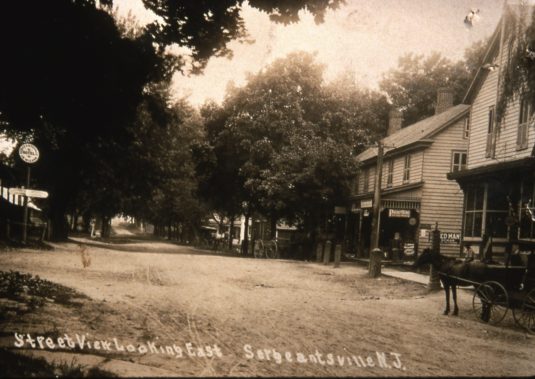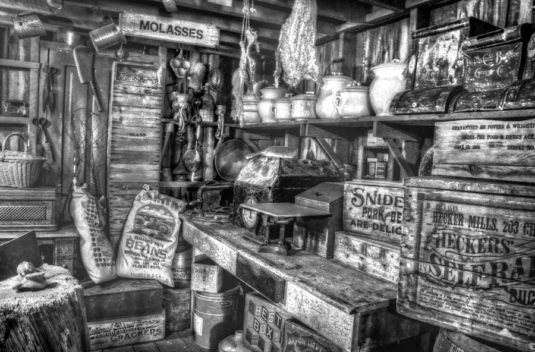 While working on a history of the Sergeantsville Inn, I realized that this would be a good time to publish Egbert T. Bush’s article about the places that made Sergeantsville such an interesting little town. Mr. Bush did not have the advantage of adding photographs the way I do. These pictures come from the postcard collection of Paul Kurzenberger. (Note that Mr. Bush’s article is in italics; my comments are not.)
While working on a history of the Sergeantsville Inn, I realized that this would be a good time to publish Egbert T. Bush’s article about the places that made Sergeantsville such an interesting little town. Mr. Bush did not have the advantage of adding photographs the way I do. These pictures come from the postcard collection of Paul Kurzenberger. (Note that Mr. Bush’s article is in italics; my comments are not.)
stores
Sergeantsville Inn, part three
Sergeantsville Inn, Part 2
Part one of this story was published last year in March 2015 (The Sergeantsville Inn). It was written quickly, and covered the time period from the original proprietary deed to the end of the 19th century. Part Two goes back to 1830 to add more information to the story.
The Sergeantsville Inn
The original version of this post, published on March 14, 2015, has been significantly revised because of new information I have received. Most of these revisions concern Jonas Thatcher, Jr. Consider this Chapter One of the History of the Sergeantsville Inn.
Milling Industry at Prallsville Back of Year 1792
Little Known of Mill That Existed Prior to John Prall’s
When the Canal Was Dugby Egbert T. Bush, Stockton, N.J.
published in the Hunterdon County Democrat, February 13, 1930It is common to speak of John Prall Jr. as the builder of the first mill in this hamlet. But his titles date back to early 1792; and to some of us it seemed strange that a site so attractive with the Wickecheoke Creek rushing into the Delaware, with an established ferry close at hand, and with a solid community back of it should have been so long without a mill. While investigation has so far failed to reveal all that was hoped for, it has demonstrated that Prall was far from being first to carry on milling business here.
“That Big Willow and Other Trees”
A Chestnut That Acted As Host to a Younger Tree
– Biggest Oak of Them All
by Egbert T. Bush, Stockton, N.J.
published in the Hunterdon County Democrat, January 1, 1931
This month is a big allergy month for me, so I looked up what Mr. Bush had to say about trees. Turns out—quite a lot. Bush had a great affection for the grand old trees that had survived the previous century, and frequently mentioned them in his articles. Now that our trees are leafing out, it seems appropriate to publish this essay. The willow described here once stood in front of Roger Byrom’s house in Headquarters.
What It Takes To Raise A Village, Part One
The following is an update of a speech I delivered at the Locktown Stone Church in May 1997. I thought it would be a good idea to archive the speech here on my website, especially since it makes a nice short history of Delaware Township. When I gave the speech, I had two large maps showing locations of mills, taverns, ferries, the oldest roads. One map showed the 18th century version of Delaware Township, and one showed the 19th century version. Whatever happened to those maps? If I find them, I’ll turn them over to Marilyn Cummings who has been working hard on just such a map project, one that can be seen on Google Earth.
Raven Rock Was Once Bool’s Island
“Village Might Appropriately Have been Called Riven Rock
Quarry Once Busy Place”
By Egbert T. Bush, Stockton, N.J.
published in the Hunterdon Co. Democrat, February 12, 1931
Note: This article was written by Egbert T. Bush, not by me. I have only added some footnotes for clarification and the photograph of Raven Rock Station, which was not part of the original article.
“Headquarters” Has Two Buildings of Historic Interest
Mill and Mansion Built at Time of French and Indian War
Name “Grover” Never Stuck
by Egbert T. Bush, Stockton, N.J
Hunterdon County Democrat, November 7, 1929
While the mother countries and their colonies were scouring rifles and picking flints in preparation for that spectacular game in the Noble Sport of kings, known to us as the French and Indian War, humble workers whose names are all forgotten were quietly engaged in shaping stones, pouring mortar and cutting “B. 1754” into the date stone for a gristmill six miles west of Flemington.
